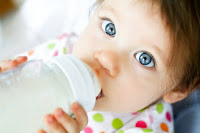The commission cited fears that the compound could affect development and immune response in young children. The EU ban will come into effect during 2011.
 There has been concern over the use of BPA for some time, with six US manufacturers removing it in 2009 from bottles they sold in the US, although not other markets. The chemical is widely used in making hard, clear plastic and is commonly found in food and drink containers.
There has been concern over the use of BPA for some time, with six US manufacturers removing it in 2009 from bottles they sold in the US, although not other markets. The chemical is widely used in making hard, clear plastic and is commonly found in food and drink containers. A European Commission spokesman said the proposal had been approved after being presented to a committee of national government experts on Thursday - months earlier than scheduled - and approved. The European parliament had called for the ban in June.
Areas of uncertainty
John Dalli, Commissioner in charge of Health and Consumer Policy, said the ban was good news for European parents. "There were areas of uncertainty, deriving from new studies, which showed that BPA might have an effect on development, immune response and tumour promotion," Mr Dalli said in a statement.
EU states will outlaw the manufacture of polycarbonate feeding bottles containing the compound from March 2011, and ban their import and sale from June 2011, the Commission said. The National Childbirth Trust is a British charity which has campaigned for the ban.
Its chief executive Belinda Phipps told the BBC: "When you put liquids into a bottle - particularly hot liquids or liquids containing fatty liquids - it leaches out of the plastic. And particularly as the bottle gets older and it gets more scratched, more and more leaches out and into the liquid."
Ms Phipps said that when a baby drinks from a bottle which contains BPA, the baby absorbs the leached chemical into its fat. "It's a chemical that mimics estrogens, but not in a good way," she said. "It interferes with estrogens getting into the receptors, and it can have some very unpleasant effects - and animal studies have shown significant effects."
Canada was the first country to declare bisphenol-A toxic in October, after it was concluded that the chemical might have harmful effects on humans, as well as the environment and "its biological diversity". The Canadian decision was strongly opposed by the chemical industry.
"Environment Canada's announcement is contrary to the weight of worldwide scientific evidence, unwarranted and will unnecessarily confuse and alarm the public," Steven G Hentges from the American Chemistry Council told the New York Times in response to the decision.

